Inside The New York Botanical Garden
Posted in Gardening Tips on May 17 2010, by Sonia Uyterhoeven
 |
Sonia Uyterhoeven is Gardener for Public Education. Join her each weekend for home gardening demonstrations on a variety of topics in the Home Gardening Center. |
Drying flowers is a wonderful way to preserve the beauty of your garden. For most people dried flowers conjure up images of lavender, strawflowers, and statice. There is, however, a wide range of flowers that can be successfully dried. Below are two techniques for drying flowers.
It is important to remember to collect flowers when they are at their peak. Avoid any excess moisture on your flowers by collecting them late in the morning once the dew has burned off.
Read More
Posted in Emily Dickinson, Exhibitions on May 14 2010, by Plant Talk
Author Finds Striking Comparison with Garden’s Re-Creation
 |
Marta McDowell is author of Emily Dickinson’s Gardens: A Celebration of a Poet and Gardener and teaches landscape history at The New York Botanical Garden, where she studied landscape design.
|
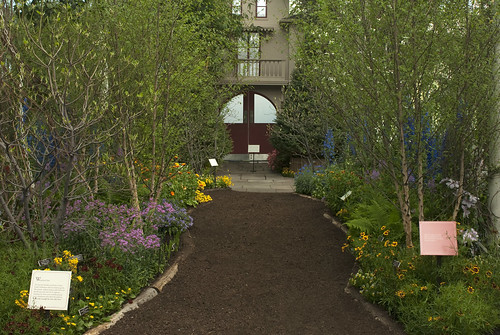 The other day I drove from the Botanical Garden to Amherst, Massachusetts, bookending a visit to Emily Dickinson’s Garden: The Poetry of Flowers with a call on Emily Dickinson’s home, the Homestead, at the Emily Dickinson Museum. Winding through Westchester County and western Connecticut, I turned onto Interstate 91 following the Connecticut River up the so-called Pioneer Valley, settled by Dickinson’s ancestors in search of good agricultural land. The unseasonably warm spring weather we were having trailed me north from the Bronx, with the temperature reading in the mid-80s on the car thermometer when I finally got to Emily’s B&B (where else?) on North Prospect Street.
The other day I drove from the Botanical Garden to Amherst, Massachusetts, bookending a visit to Emily Dickinson’s Garden: The Poetry of Flowers with a call on Emily Dickinson’s home, the Homestead, at the Emily Dickinson Museum. Winding through Westchester County and western Connecticut, I turned onto Interstate 91 following the Connecticut River up the so-called Pioneer Valley, settled by Dickinson’s ancestors in search of good agricultural land. The unseasonably warm spring weather we were having trailed me north from the Bronx, with the temperature reading in the mid-80s on the car thermometer when I finally got to Emily’s B&B (where else?) on North Prospect Street.
Read More
Posted in People on May 13 2010, by Plant Talk
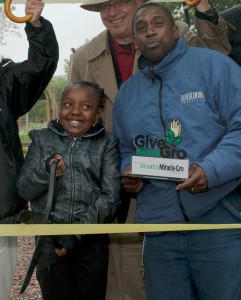 Yesterday, nine-year-old Jada Nicole Young from the Mott Haven section of the Bronx (pictured with her dad, Mike) received the Youth Gardener Award from The Scotts Miracle-Gro Company at the Community Vegetable Gardening Season kickoff at The New York Botanical Garden.
Yesterday, nine-year-old Jada Nicole Young from the Mott Haven section of the Bronx (pictured with her dad, Mike) received the Youth Gardener Award from The Scotts Miracle-Gro Company at the Community Vegetable Gardening Season kickoff at The New York Botanical Garden.
Jada Nicole’s youthful bashfulness quickly gives way to joyful excitement when she talks about gardening, which she has been doing since she was 4 years old. Since I first met her at her community garden, Padre Plaza Success Garden, I have seen her jump into all activities, and in all weather, from helping to build a pond to planting garlic, working the compost, and feeding the fish and turtles.
Read More
Posted in Wildlife on May 12 2010, by Plant Talk
Colorful Gems Spotted on Bird Walks During Spring Migration
 |
Debbie Becker leads a free bird walk at the Garden every Saturday from 11 a.m. to 12:30 p.m. beginning at the Reflecting Pool in the Leon Levy Visitor Center.
Photos of scarlet tanager and black-and-white warbler: Debbie Becker
|
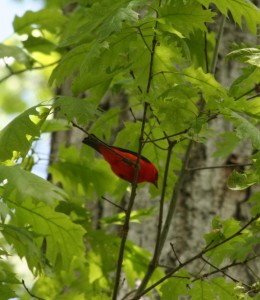 The spring bird migration is in full swing at the Garden. Recent bird walks have been a treat to the eyes and ears. Warblers are everywhere!
The spring bird migration is in full swing at the Garden. Recent bird walks have been a treat to the eyes and ears. Warblers are everywhere!
Warblers are small, colorful birds that migrate from areas of Central and South America to northern points in Canada and the United States. Once there, they build nests, reproduce, raise young, and then migrate back south in the fall.
Warblers are insect eaters and arrive just in time to feast on newly hatched insect larva. The warblers pass through the New York area mid-April to mid-May. Their beautiful songs and colorful feathers are enough to make any birder dizzy with delight.
This year searching for warblers is especially difficult because the trees bloomed earlier than usual due to the summer-like weather we had in April. With all the leaves on the trees, it is hard to find the songbirds as they dart about foraging for food. But diligence pays off. On our walks we’ve been treated to wonderful sightings, including the blackburnian warbler, a beautiful bird with an orange “fire throat.” All of the birders oohed and aahed as they strained their necks to see its throat—more orange than orange should be.
Read More
Posted in People on May 11 2010, by Plant Talk
 |
Mavia Brown is Manager of Corporate Relations at The New York Botanical Garden. |
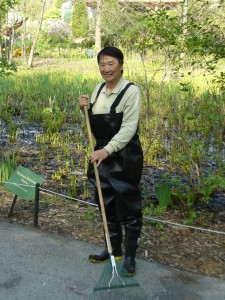 Mitsubishi International Corporation employees celebrated Earth Day last month by volunteering at The New York Botanical Garden’s Mitsubishi Wild Wetland Trail. Mitsubishi Chairman Koichi Komatsu, who is on the Board of the Botanical Garden, even donned waders and ventured into the wetland to help with the cleanup (see photo at right).
Mitsubishi International Corporation employees celebrated Earth Day last month by volunteering at The New York Botanical Garden’s Mitsubishi Wild Wetland Trail. Mitsubishi Chairman Koichi Komatsu, who is on the Board of the Botanical Garden, even donned waders and ventured into the wetland to help with the cleanup (see photo at right).
“Mitsubishi International Corporation greatly values its longstanding partnership with The New York Botanical Garden,” said Mr. Komatsu. “The Wetland Trail is an important resource for educating local schoolchildren about the environment, and we were glad to offer this contribution of our time for its upkeep.”
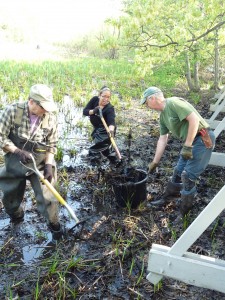 Working alongside Garden staff, the volunteers (including Sara Stroman and Joseph Stein in photo at left) rolled up their sleeves and worked hard at a variety of tasks throughout the day, including removing invasive plants that threaten the habitat and replacing them with native trees.
Working alongside Garden staff, the volunteers (including Sara Stroman and Joseph Stein in photo at left) rolled up their sleeves and worked hard at a variety of tasks throughout the day, including removing invasive plants that threaten the habitat and replacing them with native trees.
The Wetland Trail and its five acres of wetland plants teach Garden visitors about the importance and ecology of wetlands. A walk along the Wetland Trail is the first experience many school children have at the Garden each year. The Trail’s multitude of plants and animals—such as the turtles often seen sunning on a submerged rock—sparks curiosity about the environment and nature.
Read More
Posted in Emily Dickinson, Exhibitions, Gardening Tips on May 10 2010, by Sonia Uyterhoeven
 |
Sonia Uyterhoeven is Gardener for Public Education. Join her each weekend for home gardening demonstrations on a variety of topics in the Home Gardening Center. |
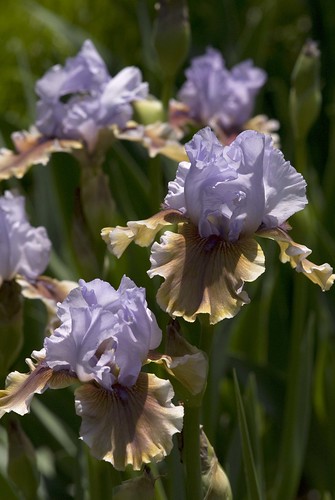 Last week in my blog we explored the history of the language of flowers. Today we’ll look at part of a floral index Emily Dickinson had access to. It is just a sampling of what a 19th-century index of flowers and their meanings would contain, but it is enough to get you started on learning the meanings of some common flowers.
Last week in my blog we explored the history of the language of flowers. Today we’ll look at part of a floral index Emily Dickinson had access to. It is just a sampling of what a 19th-century index of flowers and their meanings would contain, but it is enough to get you started on learning the meanings of some common flowers.
Many floral dictionaries were published in the United States in the late 18th and early 19th centuries. Some were simple indexes. Others were adorned with beautiful images of flowers and supplemented with literary extracts ranging from the works of Milton and Shakespeare to popular verse.
Emily Dickinson’s source for the language of flowers was more scholarly. She owned Almira H. Lincoln Phelps’ Familiar Lectures on Botany: Explaining the Structure, Classification, and Uses of Plants, with a Flora for Practical Botanists. This book contains a section titled “Symbolical Language of Flowers,” in which Phelps explains that “besides the scientific relations which are to be observed in plants, flowers may also be regarded as emblematical of the affections of the heart and qualities of the intellect.”
Read More
Posted in Emily Dickinson, Exhibitions, Programs and Events on May 7 2010, by Plant Talk
 |
Gayle Schmidt is Manager of Public Education. |
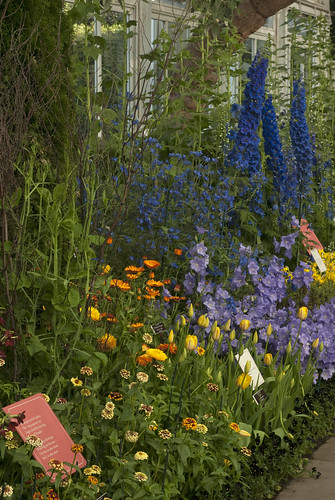 It’s not a surprise that the Garden is always busy on Mother’s Day—good children associate beautiful things like flowers with their nurturing mothers. The day gives us an opportunity to share out loud our appreciation for our moms for everything they do and have done each day of our lives.
It’s not a surprise that the Garden is always busy on Mother’s Day—good children associate beautiful things like flowers with their nurturing mothers. The day gives us an opportunity to share out loud our appreciation for our moms for everything they do and have done each day of our lives.
One of the activities the Garden has planned for the weekend during Emily Dickinson’s Garden: The Poetry of Flowers will help you explore more of the Garden and will allow you to create a card for Mom that says something special—in words and in flowers!
In Emily Dickinson’s day, a popular pastime was to make a tussie-mussie based on the period’s language of flowers— each flower representing a different meaning. Many books were sold as guides so that one could learn, for instance, what a secret admirer bearing flowers thought.
Read More
Posted in Programs and Events on May 6 2010, by Plant Talk
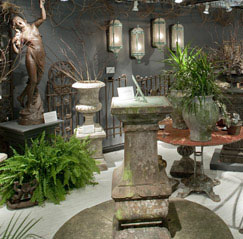 America’s most celebrated venue for garden antiques, the Antique Garden Furniture Show and Sale this year features 35 of the country’s leading dealers. During the three-day event, May 7–9, fountains, statues, benches, urns, sundials, birdbaths, and botanical prints beckon novice collectors and garden designers alike. Come see these beautiful objects and taken something home for your garden.Get Your Tickets America’s most celebrated venue for garden antiques, the Antique Garden Furniture Show and Sale this year features 35 of the country’s leading dealers. During the three-day event, May 7–9, fountains, statues, benches, urns, sundials, birdbaths, and botanical prints beckon novice collectors and garden designers alike. Come see these beautiful objects and taken something home for your garden.Get Your Tickets |
Posted in Learning Experiences on May 5 2010, by Plant Talk
Register Now for Fruit/Flower Centerpiece Workshop with Bill Tansey
 |
Trish O’Sullivan, who earned a Certificate in the Floral Design Program at The New York Botanical Garden, where she now teaches, is principal of Eco Floral Design. |
 As the world around us comes alive with color and the garden is busting with beauty, I want to share with you my enthusiasm for our upcoming Premier Floral Design Workshops and one designer in particular—the always gracious and talented Bill Tansey (right).
As the world around us comes alive with color and the garden is busting with beauty, I want to share with you my enthusiasm for our upcoming Premier Floral Design Workshops and one designer in particular—the always gracious and talented Bill Tansey (right).
The bold and lush floral style of this world-renowned floral and event designer will bloom at the Garden’s new Midtown Education Center on May 11 with a demonstration of and commentary on how to create a fruit and flower centerpiece.
Bill’s high-end, refined work is a mainstay of major benefits, including the American Ballet Theatre, the Winter Antiques Show, and opening night at the Metropolitan Opera, which gives an idea of the scale to which he presents his breathtaking and simply stunning floral talent.
Read More
Posted in Emily Dickinson, Exhibitions on May 4 2010, by Plant Talk
 |
Jessica Blohm is Interpretive Specialist for Public Education. |
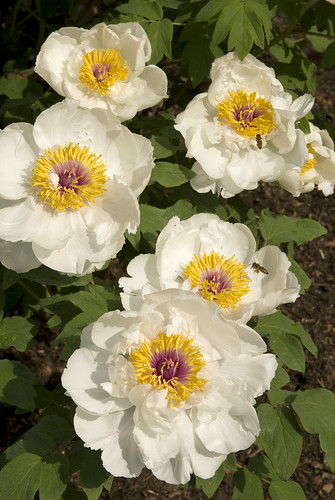 Scholars have long speculated about Emily Dickinson’s interest in plants. She was, in fact, an avid gardener and nature enthusiast. Many of her poems and letters allude to wildflowers and traditional herbaceous garden plants.
Scholars have long speculated about Emily Dickinson’s interest in plants. She was, in fact, an avid gardener and nature enthusiast. Many of her poems and letters allude to wildflowers and traditional herbaceous garden plants.
Emily Dickinson’s Garden: The Poetry of Flowers features in the Enid A. Haupt Conservatory a re-creation of Dickinson’s own mid-19th-century New England garden, an interpretation Garden curators have been able to craft from extensive research and careful reading of her poems and letters. On display are Dickinson’s favorites, including daisies, daylilies, tulips, roses, lilies, and others that inspired so much of her poetry. Not only did she grow plants, she also collected flowers from neighboring meadows and the surrounding landscape.
Flowers were one of her favorite metaphors; she used them as images in her poems and as subjects for her letters. Following is a selection of flowers that Dickinson was particularly fond of.
Today we spotlight the peony (Paeonia). Dickinson’s niece, Martha “Mattie” Dickinson Bianchi described “ribbons of peony hedges” growing along the edges of her aunt’s flower garden. Dickinson grew peonies in pink, white, and red. She often compared the pointed tips of the young shoots as they emerged from the ground in spring to red noses.
In a letter dated late April 1859 Dickinson says, “Tell Vinnie [her sister] I counted three peony noses, red as Sammie Matthews’s, just out of the ground.”
I hide Myself within my flower,
That fading from your Vase,
You, unsuspecting, feel for me –
Almost a loneliness.
Get Your Tickets


















